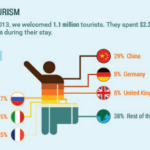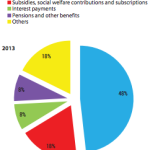Tourist arrivals to the Maldives rose 17 percent in 2013 compared to the previous year, according to the latest Maldives Monetary Authority (MMA) monthly economic review.
“This was mainly due to the large increase in tourist arrivals from China, coupled with a slight growth in arrivals from Europe. Reflecting this, the total bednights and occupancy rate also recorded an increase during the year,” the MMA’s review stated.
The review did note, however, that the average duration of stay declined in 2013 compared with the year before.
Statistics from the tourism ministry show that 331,719 Chinese tourists visited the Maldives last year, which was a 44.5 percent increase from the previous year.
Chinese tourists accounted for 29.5 percent of all tourist arrivals in 2013.
The central bank also noted that real GDP (Gross Domestic Product) was expected to “accelerate to 4.5 percent in 2014, driven mainly by the tourism sector.”
In November 2013, the finance ministry revealed that the tourism industry’s GDP growth in 2012 declined by 0.1 percent following 15.8 percent growth in 2010 and 9.2 percent in 2011.
Despite negative growth in 2012, the finance ministry estimated that the industry would have expanded 5.5 percent in 2013 and forecast a growth rate of 5.2 percent for this year.
The average duration of stay has however fallen from 8.6 days in 2009 to 6.7 days in 2012 and 6.3 days in 2013.
According to the annual tourism yearbook published by the Tourism Ministry, the average occupancy rate of all tourist establishments in 2012 was 2.5 percent below the previous year at 70.6 percent.
The Maldivian economy is largely dependent on tourism, which accounted for 28 percent of GDP on average in the past five years, and generated 38 percent of government revenue in 2012.
Meanwhile, in the fisheries industry – the second largest domestic industry – “the volume of fish exports increased by 48 percent while the earnings on fish exports rose by 14 percent” between January and November 2013 compared to the same period in 2012.
“This was contributed by the increase in both the volume and earnings on fresh, chilled or frozen tuna,” the MMA report stated.
It added that fish purchases rose by 21 percent from January to September 2013 compared to the same period the previous year.
Inflation
“This increase was due to the rise in food, metal and petroleum prices in the review period. In annual terms the IMF commodity price index increased by one percent, contributed by the increase in petroleum prices which off set the price declines in food and metal.The price of crude oil increased by three percent in monthly terms during December 2013, while prices rose by six percent in annual terms,” the review stated.
The rate of inflation in the capital Malé meanwhile decreased to 3.1 percent in December 2013, the MMA revealed, which was “largely due to the fall in fish prices.”
“Similarly, the rate of inflation in Male’ decelerated marginally in monthly terms during December 2013, which was also due to the fall in fish prices,” the review stated.





